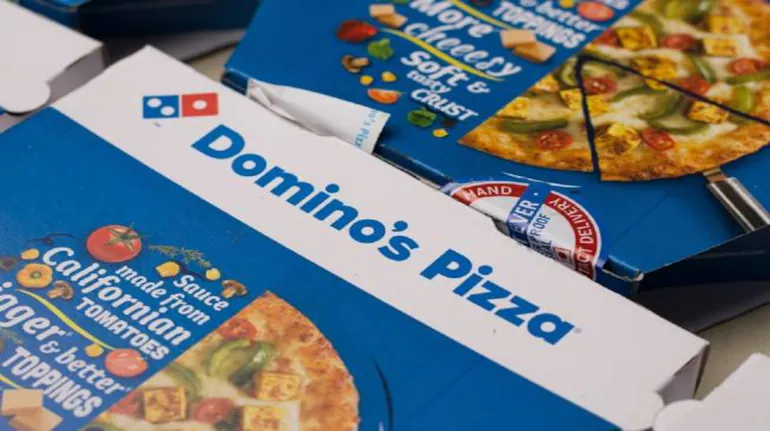In the realm of fast food, few names resonate as strongly as Domino's. Synonymous with delicious, speedy pizza delivery, Domino's has carved out a significant niche in the global food industry. From its humble beginnings to its innovative approach in the digital age, Domino's has consistently pushed the boundaries of what it means to be a modern pizza chain.
Domino's Pizza was founded in 1960 by brothers Tom and James Monaghan in Ypsilanti, Michigan. They purchased a small pizza store named DomiNick's, which they later renamed Domino's Pizza, Inc. after buying out their partner. The company’s commitment to quick delivery and quality ingredients quickly garnered a loyal customer base. By the 1970s, Domino's had expanded to 200 stores across the United States. The brand's growth strategy centered around a unique franchising model, which allowed for rapid expansion while maintaining consistent quality and service. This approach laid the foundation for Domino's to become a dominant player in the fast-food industry.
Domino's has always been at the forefront of innovation in the pizza industry. In 1983, it introduced the now-famous 30-minute delivery guarantee, promising customers a pizza at their door within half an hour of placing their order. This bold move not only set Domino's apart from competitors but also underscored their commitment to customer satisfaction. Though the guarantee was discontinued in the early 1990s due to safety concerns, it left a lasting impact on the brand's image. The company continued to innovate with its menu, adding items like breadsticks, chicken wings, and desserts to appeal to a broader audience. However, it was the embrace of technology that truly transformed Domino's into a modern powerhouse.
The digital revolution has been a game-changer for many industries, and Domino's is no exception. Recognizing the potential of online ordering, Domino's launched its first website in 1996, allowing customers to place orders via the internet. This move was ahead of its time and laid the groundwork for future technological advancements.
In 2008, Domino's made a bold decision to overhaul its pizza recipe in response to customer feedback. The new recipe, which featured a more flavorful crust, richer sauce, and better-quality cheese, was part of a larger campaign to rebrand the company and improve its product. The campaign, dubbed the "Pizza Turnaround," was a resounding success and demonstrated Domino's willingness to listen to its customers and adapt.
The introduction of the Domino's Pizza Tracker in 2008 revolutionized the customer experience. This online tool allowed customers to track their pizza from the moment they placed the order until it arrived at their door. This innovation not only increased transparency but also enhanced customer engagement and satisfaction.
With the advent of smartphones, Domino's continued to lead the way in digital innovation. The launch of the Domino's mobile app in 2011 made it easier than ever for customers to order their favorite pizzas on the go. The app's user-friendly interface, combined with features like voice ordering and easy customization, set a new standard for convenience in the fast-food industry.
Domino's further embraced technology with the introduction of the AnyWare ordering system, which allowed customers to order pizza using various platforms, including smart TVs, Amazon Echo, and even social media platforms like Twitter. This seamless integration of technology into everyday life showcased Domino's commitment to staying ahead of the curve.
Today, Domino's operates over 18,000 stores in more than 90 countries, making it one of the largest pizza chains in the world. The company's success can be attributed to its ability to adapt to different markets while maintaining a consistent brand identity. Each international franchise is tailored to meet local tastes and preferences, ensuring that Domino's remains relevant and appealing to a diverse customer base. In India, for instance, Domino's offers a variety of vegetarian pizzas to cater to the local dietary preferences, while in Japan, unique toppings like squid and mayonnaise are available. This localization strategy has been instrumental in Domino's global expansion and success.
As a major player in the food industry, Domino's recognizes its responsibility towards sustainability. The company has implemented several initiatives aimed at reducing its environmental impact. These include efforts to minimize food waste, use sustainable packaging, and improve energy efficiency in its stores and supply chain. In 2021, Domino's announced its commitment to achieving net-zero emissions by 2050. This ambitious goal is part of a broader strategy to address climate change and promote sustainable practices across the business.
Beyond its commercial success, Domino's has a strong tradition of giving back to the communities it serves. Through initiatives like Domino's Partners Foundation, the company provides financial assistance to employees facing hardship. Additionally, Domino's regularly engages in charitable activities, supporting various causes such as disaster relief, hunger alleviation, and education. Looking ahead, Domino's shows no signs of slowing down. The company's continued focus on innovation, technology, and customer satisfaction positions it well for future growth. With plans to expand its store footprint and further enhance its digital capabilities, Domino's is poised to maintain its leadership in the pizza industry.
In conclusion, Domino's has transformed from a small pizza store in Michigan into a global pizza powerhouse through strategic innovation, technological advancements, and a commitment to quality and customer satisfaction. As the company continues to evolve and adapt to changing market dynamics, it remains a beloved brand for millions of pizza lovers worldwide.






